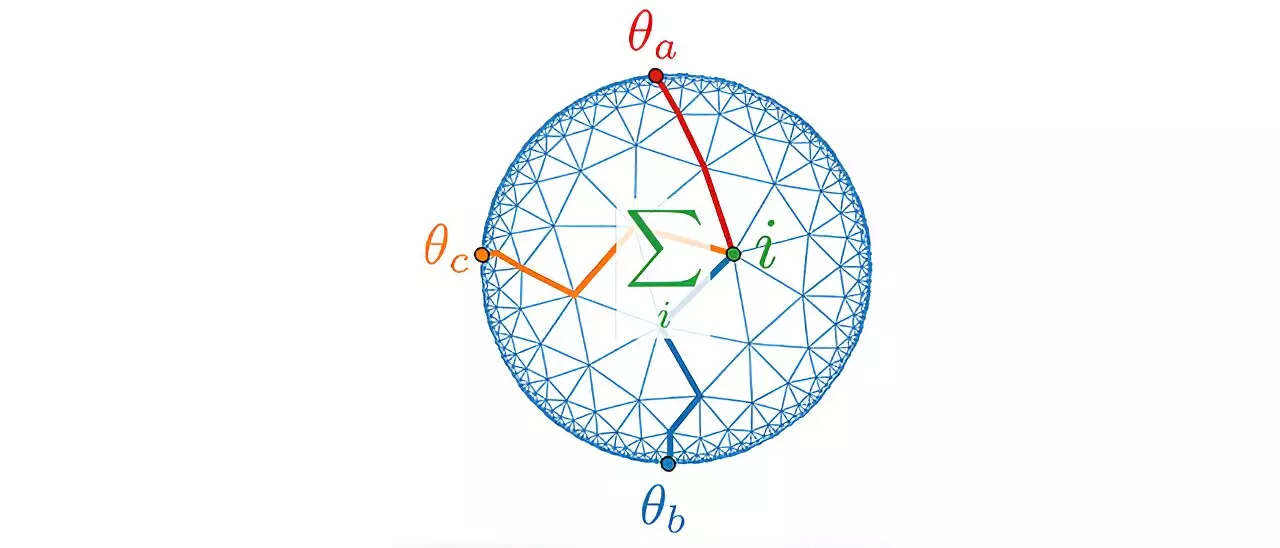For centuries, gravity has fascinated and puzzled scientists, beckoning them to explore its intricate nature. While our grasp of gravitational phenomena over vast distances has matured, especially regarding planetary orbits and tidal predictions, the enigma deepens when we descend to the quantum level. Physicists like Professor Johanna Erdmenger, Chair of Theoretical Physics III at the University of Würzburg, emphasize the urgency of this inquiry. To unveil the mysteries of the universe—from the origins of the Big Bang to the enigmatic interiors of black holes—we must delve into the quantum realm of gravity, where classical laws falter. Erdmenger highlights this challenge succinctly: “At very high energies, the classical laws of gravity fail.”
Central to the quest for a cohesive understanding of quantum gravity is the AdS/CFT correspondence. This groundbreaking theoretical framework posits that complex gravitational theories enacted in a high-dimensional space can be depicted through simpler quantum theories existing at the boundary of that space. The terminology might appear daunting at first, but the principles it encompasses offer profound insights. Anti-de-Sitter (AdS) space represents a distinct curved spacetime structure, while conformal field theory (CFT) describes quantum systems that maintain consistent properties across various spatial dimensions.
Erdmenger likens this relationship to an innovative yet comprehensible analogy: “The AdS/CFT correspondence allows us to understand complicated gravitational dynamics using simpler mathematical models.” This analogy is likened to a funnel-shaped curved spacetime, where the dynamics at the boundary relate symbiotically to more intricate processes occurring within—much like a holographic image that conveys three-dimensionality from a seemingly two-dimensional representation.
Seizing the potential of the AdS/CFT framework, Erdmenger and her research team have established a pioneering method aimed at corroborating this previously untested correspondence through practical experimentation. By employing a branched electrical circuit, they simulate the intricacies of curved space-time. This innovative approach generates electrical signals at the circuit’s branch points, emulating gravitational dynamics as observed in different regions of spacetime.
The findings of their study, published in Physical Review Letters, reveal a striking correlation: the dynamics at the circuit’s periphery resonate identically with those within, effectively validating a core prediction of the AdS/CFT correspondence. This represents not just an academic triumph; rather, it serves as a critical stepping stone towards real-world applications that might stem from this theoretical venture.
With this foundational work laid out, the Würzburg team now anticipates a transformative phase where they will move from theory to applied practice. The experimental validation of the AdS/CFT framework opens doors to unprecedented advancements in gravitational research, lending credence to theoretical predictions that have long remained unconfirmed. However, the implications extend far beyond gravitational understanding—Erdmenger notes that their work could herald new technological innovations as well.
The circuits being developed could enable technologies rooted in quantum mechanics, potentially offering systems capable of transmitting electrical signals with diminished loss. The very design of these circuits, which mimic the curvature of spacetime, signifies a leap forward in engineering approaches, potentially enhancing the performance and efficiency of electronic devices.
The research conducted by Professor Erdmenger and her team at the University of Würzburg epitomizes a critical intersection between theoretical physics and practical experimentation. As we delve deeper into the realms of gravity—be it through understanding cosmic phenomena or innovating technology for the future—we stand on the brink of a paradigm shift. The unraveling of gravity at the quantum level not only promises to satisfy our intellectual curiosity but also lays the groundwork for technological advancements that could redefine various scientific domains. The journey is arduous, but through innovation and curiosity, we inch closer to unlocking the profound mysteries of the universe.


Leave a Reply